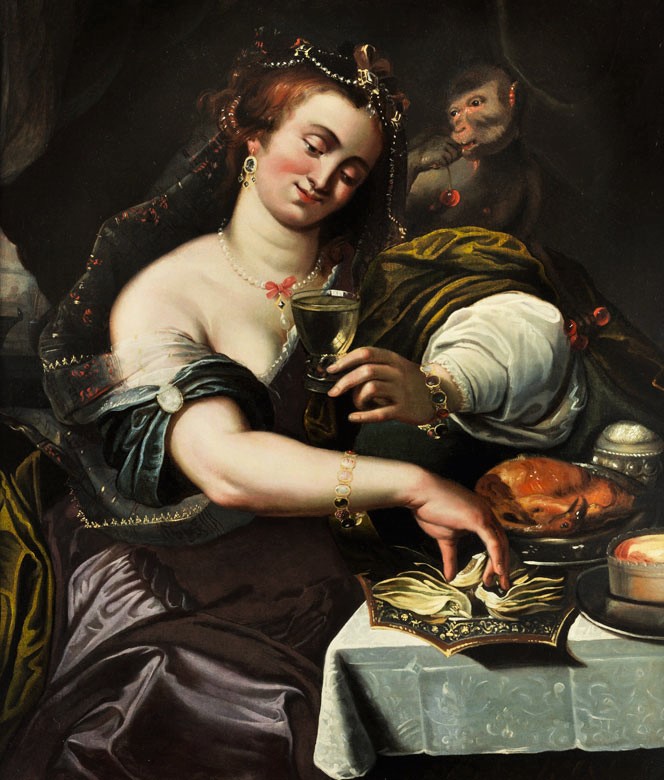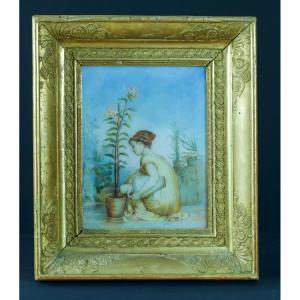Oil on canvas, early 17th century, attributed to Abraham Janssens, in a carved and gilded wooden frame.
Dimensions with the frame: h. 108 cm, l. 93 cm
The allegory of taste is part of a series of five paintings featuring the feminine personifications of the senses: sight, hearing, smell, touch, taste. In the seventeenth century, his series of paintings built around the theme of the five senses are particularly popular. Their composition can appeal to allegories completely codified. There is an animal code: the deer is the hearing, the eagle or the cat the sight, the dog is the smell, the monkey personifies the taste, the turtle touches it. Objects can hold the same role: the mirror for the sight, the flowers for the smell, the musical instruments for the hearing, the fruits or the wine for the taste, the dice, the cards or a statuette for the to touch. Abraham Janssens (Antwerp, c. 1575-1632), painter of history, allegorical, mythological and religious subjects. He received his first training at the painter Jan Snellinck. After a three-year study stay in Rome, then in the midst of the Caravaggesque movement, he returned to Antwerp in 1601, and was immediately admitted as a master at the Guild of Saint Luke. Very soon, strong of his Italian experience he will prevail, alongside Ambrosius Francken and Otto van Veen, as leader of the Antwerp school, maintaining the tradition of the monumental painting as opposed to the contemporary development of the small format genre painting. First attracted by Mannerism, Janssens is one of the first painters to introduce Caravagism in Flanders. Having become master of chiaroscuro, his painting is made of strong contrasts of light and shadow.
























 Le Magazine de PROANTIC
Le Magazine de PROANTIC TRÉSORS Magazine
TRÉSORS Magazine Rivista Artiquariato
Rivista Artiquariato
